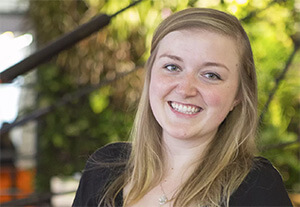
Four years ago, Cait Flanders, a personal finance writer in Vancouver who turns 30 tomorrow, pulled out her credit cards and faced the truth she had been avoiding for years: She was $25,000 CAD ($19,800 USD) in debt, and most of it had been frittered away.
Student loans accounted for $4,500 CAD ($3,600 USD), but as for the rest? “I don’t have a great answer for it. I just lived a lifestyle I couldn’t afford,” she says. She wasn’t even a big shopper, and her rent, at $1,100 CAD ($870 USD), is below average for her city. It was mostly just inattention to her finances: “If my friends were going to dinner, I never wanted to say no. So even if that meant going out to dinner every day of the week, I said yes.”
She started a blog, Blonde on a Budget, which now gets about 30,000 readers monthly, and after two years of scrimping — one haircut, no travel, no dining out, putting as much as 55% of her monthly income toward her debt — she was debt-free.
But afterward, she relaxed her budget. Though she didn’t fall back into debt, she would only save 8% of her monthly income even when she intended to put away 20%. She did hit that goal a few times that first year out of debt, but “considering I had once been doing without up to 55% of my income, that’s somewhat underwhelming,” she says.
Then she saw a blog post by Mr. Money Mustache, a blogger who retired at age 30, in which he said that every permanent decrease in spending has a double benefit: it increases the amount of money you have each month to put into savings, plus it also lowers the amount you need every month for the rest of your life. Around the same time, her sister had boasted to her of saving 20% of her income. “I said, ‘Whoa whoa whoa — you live at home and are going to school. Do you need 80% of your income?’ And I thought, ‘Why don’t I give myself the same advice?’” she says.
One day, not able to find little things — a can opener, a razor blade — in her one-bedroom apartment, she realized her cupboards were overflowing with junk. “I’m spending $5 here, $10 there … It’s nothing crazy — an extra lotion or shower gel — but then you have eight of them. I was consuming just for the sake of consuming. I thought, ‘I need to stop buying and just use up this stuff I already have.’”
A month later (and a year ago today), she embarked upon a year-long shopping ban. Over the year, she got rid of 70% of her stuff, lived on just 51% of her income ($28,000 CAD, $22,000 USD), saved 31% (about $17,000 CAD, $13,500 USD) and traveled on the last 18%, with two trips to New York, one trip to New York, Boston, Philadelphia and Washington, D.C., and other trips to Portland, New Orleans, Denver and her hometown Victoria and Toronto several times each (total cost of travel: just under $10,000 CAD; $8,000 USD). Here’s how she did it.









